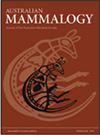A pain in the neck: weak links are not a reliable release mechanism for radio-collars
IF 0.9
4区 生物学
Q3 ZOOLOGY
引用次数: 3
Abstract
Collars are an attachment method commonly used to mount data collection devices on wildlife. Removal of collars at the completion of a data collection period is a high priority for the purpose of animal welfare, but retrieval of collars can often be difficult. Weak links or other drop-off devices are used by researchers with the intention of improving collar retrieval rates, and for mitigation of animal welfare risks associated with collar entanglement. However, the design and effectiveness of such devices is not regularly reported in detail in the literature. We surveyed wildlife researchers to collate and communicate their experiences with weak links, and assess their attitudes towards collaring Australian mammals in the 35–5500 g weight range. Forty-five researchers responded to the survey, of whom 25 had used weak links in at least one study. There was very little consistency between the performances of weak links, with researchers finding them effective in less than half of the scenarios reported upon. Outcomes varied depending on the type of material used for the link, the species being collared, and the environmental conditions under which the collars were being deployed. We recommend (1) researchers test weak links prior to deployment; (2) users to not rely upon weak links as the primary method of collar retrieval; and (3) continued communication of design and outcomes of all radio-collars deployed including those with weak links.脖子上的痛苦:弱链接不是无线电项圈的可靠释放机制
项圈是一种通常用于在野生动物身上安装数据收集设备的附加方法。为了动物福利的目的,在数据收集期结束时取下项圈是一项高度优先事项,但项圈的回收往往很困难。研究人员使用弱链接或其他掉落装置,目的是提高项圈取回率,并减轻与项圈缠结相关的动物福利风险。然而,这种装置的设计和有效性在文献中没有定期详细报道。我们调查了野生动物研究人员,以整理和交流他们在薄弱环节的经验,并评估他们对35-5500克体重范围内的澳大利亚哺乳动物的态度。45名研究人员对这项调查做出了回应,其中25人在至少一项研究中使用了弱链接。薄弱环节的表现之间几乎没有一致性,研究人员发现它们在报道的不到一半的情况下有效。结果取决于连接材料的类型、所系项圈的物种以及项圈所处的环境条件。我们建议(1)研究人员在部署前测试薄弱环节;(2)用户不能依赖薄弱环节作为领圈检索的主要手段;(3)继续沟通所有部署的无线电项圈的设计和结果,包括那些薄弱环节。
本文章由计算机程序翻译,如有差异,请以英文原文为准。
求助全文
约1分钟内获得全文
求助全文
来源期刊

Australian Mammalogy
ZOOLOGY-
CiteScore
2.50
自引率
8.30%
发文量
26
期刊介绍:
Australian Mammalogy is a major journal for the publication of research in all branches of mammalogy. The journal’s emphasis is on studies relating to Australasian mammals, both native and introduced, and includes marine mammals in the Antarctic region. Subject areas include, but are not limited to: anatomy, behaviour, developmental biology, ecology, evolution, genetics, molecular biology, parasites and diseases of mammals, physiology, reproductive biology, systematics and taxonomy.
Australian Mammalogy is for professional mammalogists, research scientists, resource managers, consulting ecologists, students and amateurs interested in any aspects of the biology and management of mammals.
Australian Mammalogy began publication in 1972 and is published on behalf of the Australian Mammal Society.
 求助内容:
求助内容: 应助结果提醒方式:
应助结果提醒方式:


